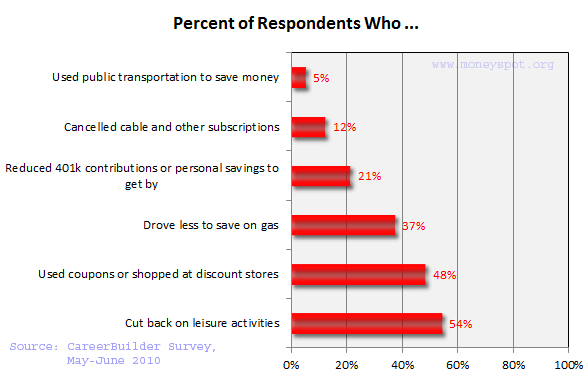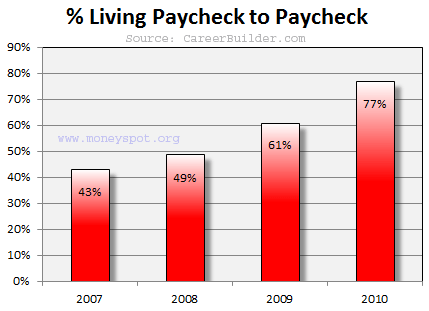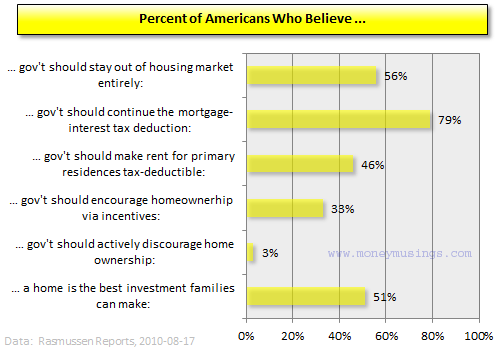This year’s CareerBuilder financial survey is out, and the headline ain’t really a shocker: 42 percent of workers report living paycheck-to-paycheck.
CareerBuilder: 2011 Financial Survey
And, of workers who make six figures, CareerBuilder found that 14 percent reported living paycheck to paycheck, and 6 percent reported that they were unable to make ends meet every month.
CareerBuilder also asked the roughly 5,200 workers surveyed what they would or wouldn’t be willing to give up if push came to shove. Percentages of workers who “absolutely would not do without” certain items were as follows:
- Internet Connection — 56 Percent
- Driving — 46 Percent
- Mobile Phone — 42 Percent
- Cable TV — 27 Percent
- Eating Out — 11 Percent
A full 21 percent of workers reported either dipping into savings or reducing retirement contributions within the last year in order to get by.
What Happened to Last Year’s Numbers?
Last year, I noted that CareerBuilder’s survey found 7 in 10 workers living paycheck to paycheck. Curiously, this year’s survey says that last year’s survey found not the oh-my-gosh rate of 7 in 10, but rather 4.3 in 10. And I see that Press Release 784 (my source/link) has disappeared from CareerBuilder’s archives. I don’t know if their methodology has changed, or if they’re now running their numbers through the Federal Agency of Enforced Statistical Correctness before releasing them. Gotta wonder just what went on, though.







 You want stimulus? Well, how ’bout the chance to go almost 15 months without a house payment?
You want stimulus? Well, how ’bout the chance to go almost 15 months without a house payment?